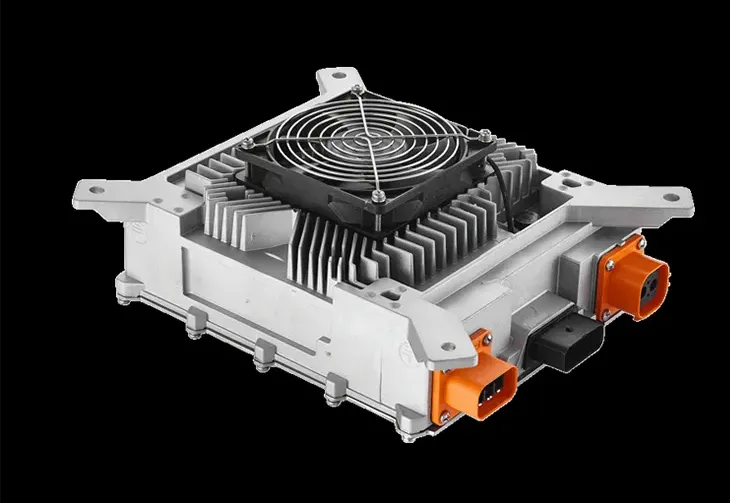On-Board Charger (OBC) Explained: Empowering Electric Vehicles with Efficient Charging
Jul 28,2023 | TCcharger
With the world's increasing focus on sustainability and reducing greenhouse gas emissions, electric vehicles (EVs) have emerged as a promising solution for greener transportation. The efficient charging of EVs is a critical aspect of their widespread adoption, and the On-Board Charger (OBC) plays a central role in this process. In this blog, we will delve into what an On-Board Charger is, how it functions, and its significance in empowering electric vehicles with efficient charging capabilities.

1. Defining the On-Board Charger (OBC): An On-Board Charger, often abbreviated as OBC, is a vital component integrated into electric vehicles. It serves the crucial function of converting Alternating Current (AC) from external charging stations into the Direct Current (DC) needed to charge the vehicle's high-voltage battery pack. The OBC is typically located within the vehicle and is responsible for managing the charging process efficiently and safely.
2. How Does the OBC Work? When an electric vehicle is plugged into a charging station, the OBC comes into action. It receives the AC power from the charging station and transforms it into the appropriate DC voltage and current required to recharge the high-voltage battery pack. The OBC also regulates the charging process, ensuring that the battery receives the correct voltage and current levels to prevent overcharging or damaging the battery cells.
3. Types of Charging Supported by OBC: The OBC is designed to support different charging levels, depending on the capabilities of the electric vehicle and the charging infrastructure. The most common charging levels are:
- Level 1 Charging: Uses a standard household outlet (120V AC) and is typically the slowest charging option.
- Level 2 Charging: Requires a dedicated charging station (240V AC) and provides faster charging times compared to Level 1.
- Level 3 (DC Fast Charging): Offers rapid charging by delivering DC power directly to the battery, bypassing the OBC. DC fast charging is typically used for quick charging on the go.
4. Efficiency and Energy Management: Efficiency is a key aspect of OBC design. High-quality OBCs are engineered to minimize energy losses during the charging process, ensuring that a significant portion of the energy from the charging station reaches the vehicle's battery. Efficient energy management by the OBC contributes to improved driving range and reduced charging times for electric vehicles.
5. Bidirectional Communication: Advanced OBCs often feature bidirectional communication capabilities. This means that the OBC can communicate with the external charging station, allowing for dynamic adjustments in the charging process based on factors like available power supply, charging rate, and vehicle battery status. Bidirectional communication ensures optimized charging and efficient energy use.
6. Safety Features and Protections: Safety is paramount in electric vehicle charging. OBCs are equipped with various safety features and protections, such as overcurrent protection, short-circuit protection, and thermal management systems. These safety mechanisms safeguard the vehicle's electrical systems and prevent potential hazards during the charging process.
7. Advancing Electric Mobility: The On-Board Charger is a pivotal technology that has contributed to the rapid advancement of electric mobility. Its efficient and reliable charging capabilities have made electric vehicles more practical and appealing to a broader range of consumers. As electric vehicle technology continues to evolve, OBCs will play a central role in shaping the future of sustainable transportation.
Conclusion: The On-Board Charger (OBC) is a crucial component that empowers electric vehicles with efficient and safe charging capabilities. By converting AC power from external charging stations into the appropriate DC power for the high-voltage battery pack, the OBC ensures optimal charging performance and enhances the overall efficiency of electric vehicles. As electric mobility gains momentum, the OBC will remain at the forefront of innovation, contributing to the transition towards a cleaner and more sustainable future of transportation.



